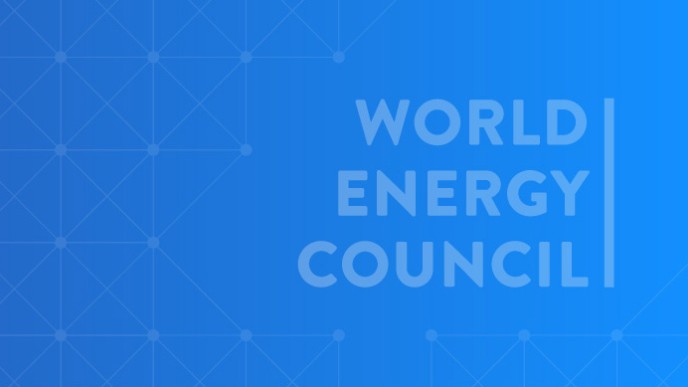Closing the implementation gap by involving road building communities
Dr Angela Wilkinson, Secretary General and CEO, World Energy Council
This article is based on a Trigger Talk attended by Dr Wilkinson on 31 May 2021.
In this decade of delivery, humanising energy is imperative to closing the implementation gap and activating road building communities. Despite all the talk of a new era of cooperation, I am concerned by the crowded, fragmented and polarised energy transition leadership landscape.
It is our World Energy community call to action to involve more people – workers, women and future energy leaders, customers, citizens and community cooperatives - in progressing successful energy transitions along multiple pathways.
A decade for delivery
Progress is usually 1% inspiration and 99% perspiration. The hard work in translating net zero goals and carbon-positive visions into reality has only just begun. It will not be achieved all at once or by following a single routemap. Those of us that have energy in our jobs titles must create positive social energy for change in discharging our leadership responsibilities.
There is no such thing as the average global energy user, but if there was, it is sobering to remember that he or she would need to peddle a bicycle 160 years to produce the equivalent useful energy they consume every year. I believe we have a responsibility to society to highlight that new and improved models of human and sustainable development will need more clean, more just energy and more flexible energy, in multiple useful forms – heat, power and liquid fuels.
We all know it is important to make a start – to set targets and timelines and to coordinate “high level” road-mapping. We also know that top-down energy transition road mapping needs to be well coordinated across multiple levels, issues and sectors. However, policy coherence cannot be achieved without people coherence.
Awareness of the planning for a better energy future is not enough. This future needs to be cocreated. More people literally need to get involved in progressing multiple pathways to the anticipated customer-centric, climate neutral and abundant energy futures needed for billions of better lives and a healthy planet. Only the “pull” of connected and increasingly diverse energy societies will drive roadbuilding fast enough along multiple pathways to result in more practical and affordable options for the 99% of societies.
We urgently need to address demand-side ‘activation’ to close ‘implementation’ gaps. Real progress and pace of change can only be enabled with a step change in energy literacy, a turnaround in workforce transition, including re-skilling and a shift to demand-driven solutions. Humanising energy, in short, is vital in avoiding the trap of single issue advocacy and solutions designed for the few.
Change is invariably socially messy, so bottom up action-learning is required as more people get involved in building forward together. As we drive to impact in this pivotal decade of delivery, we need to engage the increasing diversity in meanings of energy – resources, systems, people, skills, etc) and forge a common, shared vocabulary. Let’s start with getting rid of hydrogen colour prejudice and base policies instead on carbon and methane content and flexible uses. Keeping the world energy future open to all was central to the origins of the World Energy Council and, in effect, to our continued role as the world’s oldest independent energy transition road building community.
When we first formed, back in the 1920s, the transitions to coal and oil were essential to save forests and whales and in ushering a new era of energy for peace. The subsequent transition to electrification and life at the ‘press of a button’ ushered in an era of energy for prosperity and better quality lives of billions of people worldwide. Our one hundred year heritage in managing energy transitions for peace and prosperity is the foundation for convening and cultivating the practical know-how and best practices needed in an era of energy for people and planet. We exist to convene and support the new communities from all corners of the earth – the energy roadbuilders who are progressing energy transitions along multiple pathways. Being impartial and impactful is not easy, but its is what we do.
We do not advocate for any country, company or technology. We are the common-sense community of practice action and best practice exchange. We have the credibility and courage to call for a sense-check on polarising and hubristic advocacy. In supercharging the role of societies, we cannot realistically progress fair and futures-fit energy transitions if workforce transition, behaviours, new energy users and shifts in demand, remain blind-spots in roadmaps. Roadbuilding involves effective multi-stakeholder cooperation, aligned across multiple levels and interacting up, down and sideways. This can only flourish through active trust and by engaging with diversity in energy– geographies, technologies and most importantly - people.
The Humanising Energy Imperative
There is an increasing proliferation of roadmaps, full of promises about accelerating technology and tipping points and yet empty of details on people, uses and behaviours. The gaps between energy “haves” and “have nots” have grown wider in this crisis and this pattern is evident in all regions and countries. We must also prepare for the return of global energy demand growth, anticipate new energy uses and users and change behaviours.
The crisis reminds us that the future of energy is a much bigger story than technology. Renewables will need other energy friends and flexible storage solutions to get to scale. Pathways for clean heat, clean molecules and clean electrons are interlinked for decades to come. We are already working to develop demand-focussed energy scenarios that can be used by multiple stakeholders to inform action now. We have been conducting regular surveys of our World Energy community to map and inform ‘activation gaps’. For example, our surveys show a gap exists between what customers are doing and what customers need to be doing to drive transition forward.
Closing these gaps will not be easy.
The scale of human system capabilities
Our humanising energy agenda supports truly global ambitions and connects across multiple UNSDG, UNFCCC, UNCBD and national, agendas. To achieve this, we are addressing the “implementation gaps” by involving and equipping more people as road builders and better coordinating the road mappers. I believe as a diverse globally networked energy-plus community we can pull together and co-create customer centric, climate neutral energy futures. We are scaling-up our roadbuilding capabilities in this pivotal decade of delivery via our three centenary campaign ambitions:
- Accelerating energy literacy
- Involving more people, including those impacted by transition, in build forward together ‘sprints’
- Enabling workforce transition and extending resilience to people and supply chains
Through these, we are actively addressing “activation gaps” to engage the pull of customers, cities and cooperative communities at scale.
The 25th World Energy Congress
This is the why the theme of the St Petersburg World Energy Congress next year in October 2022 is "Energy for Humanity". This Congress takes place a year after UN Energy and COP26 and will provide an opportunity to showcase achievements in our centenary campaign on humanising energy by involving more people in activating and implementing roadmaps.
I invite everyone in the energy roadbuilding community to join us for this momentous occasion. I am confident it will be a moment of inspiration and celebration.





